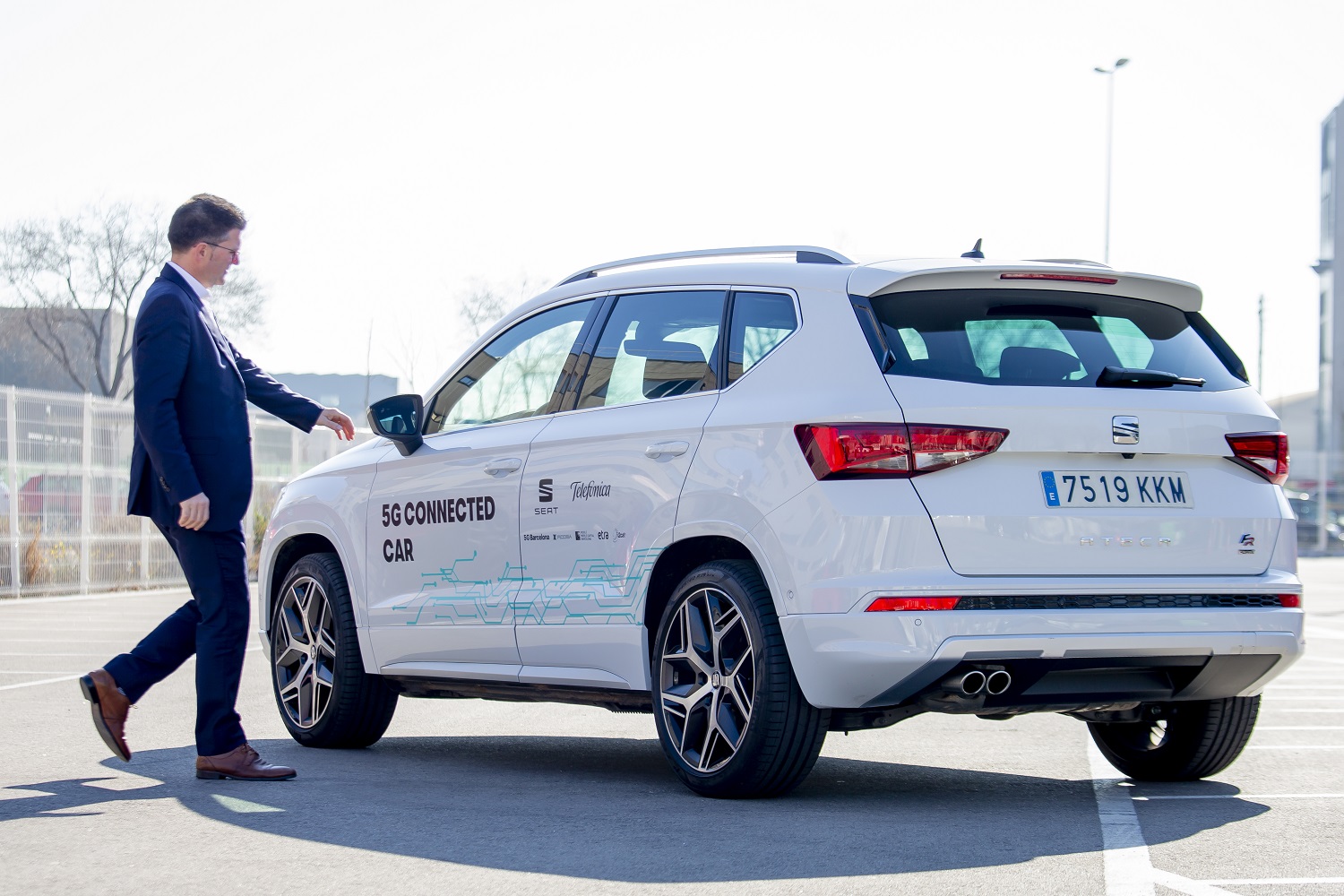
- The road infrastructure and vulnerable users “speak” to vehicles using the existing mobile network by sending warnings to the car in the face of danger or unforeseen circumstances.
- The connected car communicates with all the surrounding elements using C-V2X technology developed by Ficosa, which offers two types of communication: both traditional communication through the mobile network and direct vehicle-to-vehicle (V2V) connectivity.
- The deployment of 5G capabilities, specifically Ericsson’s edge computing solution, make these use cases possible as they offer computing capacity at the network edge and minimal latencies.
- 5G’s extensive bandwidth will also be used for an exclusive display of the first case of 5G on-board entertainment with a download of 4K contents using the next-generation mobile platform from Qualcomm Technologies.

18 February, 2019
Madrid, 18 February 2019.- The streets of L’Hospitalet de Llobregat will provide the stage for connected car use cases and 5G driver assistance in a real environment. This is the result of the joint work of Telefónica, SEAT, Mobile World Capital Barcelona, Ficosa, ETRA and i2CAT, and the collaboration of CTTC and UPC. Ericsson and Qualcomm Technologies, Inc., a subsidiary of Qualcomm Incorporated, have also taken part in equipping both the vehicles and the surrounding environment with technology that enables them to exchange information, primarily to increase road safety. The project is part of the 5G Barcelona initiative to establish the city of Barcelona as a benchmark 5G hub in Europe.
The two essential elements for making these use cases possible are C-V2X (Cellular Vehicle to Everything) and Edge Computing technologies. C-V2X technology specifically assists driving as it allows the vehicle to communicate with all the surrounding elements (other cars, traffic lights, traffic signs, pedestrians, cyclists, motorcycles, etc.). For cars to “speak” to the city, latencies also need to be minimal. It is therefore necessary to deploy 5G capabilities in the current network. Specifically this refers to the capacity of the edge computing server, a large distributed brain that houses the contents and applications very close to the point where users consume them.
SEAT has provided two vehicles, one of which is an Ateca model and the other an Arona. These are equipped with cutting-edge connectivity technology and modified to be able to warn the driver through the instrument panel. Telefónica has contributed with end-to-end connectivity and, as an innovation, by opening up its network so that third parties can deploy applications –such as traffic management in this case– at the network edge. Ficosa has developed and produced the C-V2X communications platform on-board the vehicle. This allows for the transmission of information from a car to any entity that may affect the vehicle and vice versa. i2CAT is in charge of developing the ultra-precise solution for bicycle localisation. ETRA, a road system infrastructure provider and supplier, has established connectivity at traffic crossroads, while Mobile World Capital Barcelona, representative of 5G Barcelona, is the project’s overall supervisor and also offers support in coordinating it. Ericsson, meanwhile, has supplied 5G technology and Qualcomm Technologies is the supplier of the next-generation connectivity platform both of network communication and of direct communication.
Specifically, the three use cases of driver assistance to be demonstrated in Barcelona in the area surrounding the Mobile World Congress site are:
- Detection of a pedestrian on a zebra crossing: using a thermal camera the traffic lights will detect the presence of the pedestrian on the zebra crossing and via edge computing vehicles will be alerted and a warning message will appear on the control panel should it be necessary
- .Detection of a cyclist turning right: the bicycle will be equipped with connectivity and with an ultra-precise localisation solution, via edge computing, and will communicate with surrounding cars to inform them of its position. In the event of possible collision, the cars will display a warning message on the control panel. The bicycle will be localised using ultra-wideband beacons that will have been deployed on the road.
- Detection of a stationary car on a road with low visibility: a car stopped in an area of the road with low visibility activates its hazard lights and automatically warns other approaching vehicles through a message on the control panel. This communication is sent using the direct communication interface.
In addition to these safety use cases, there will also be a use case of on-board entertainment and the download of 4K contents using the 5G network, which allows for new experiences while travelling. In this event the vehicle is equipped with the next-generation mobile platform from Qualcomm Technologies that, when combined with video storage at the edge, will allow for streamed viewing of 4K contents.
Stay up to date about everything
Subscribe to stay up to date with the latest content from Mobile World Capital Barcelona.